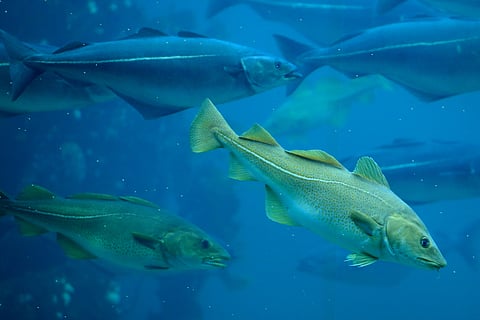

"Farmers will have clearer responsibility for preventing fish from spawning in pens, and that they must have the necessary contingency plans in place to ensure this does not occur,” Director of Fisheries, Frank Bakke-Jensen.
Photo: Adobe Stock
The Norwegian government has introduced new regulations for cod aquaculture designed to reduce the risk of farmed cod spawning in pens and potentially affecting wild populations.
The amendments to the Aquaculture Operations Regulations, announced by Norway's Ministry of Trade, Industry and Fisheries, require cod farmers to regularly evaluate the sexual maturity of their stock, conduct risk assessments for spawning, and prepare harvesting plans if spawning is imminent.
“We want a sustainable cod farming industry," said Fisheries and Oceans Minister Marianne Sivertsen Næss, in a press announcement. "The changes we have now introduced will reduce the risk of spawning in pens and ensure more sustainable development,” she said.
The move comes after a new evaluation by the Norwegian Directorate of Fisheries, which found that the industry continues to face significant challenges in preventing cod from maturing and spawning in pens. The 2024–2025 inspection report concluded there had been no substantial improvement compared to the previous season and noted that the problem was widespread across the industry, though with variation between companies.
For the first time, inspectors also assessed cod in their first winter at sea and discovered that a significant proportion of male fish were already sexually mature at this stage. According to Director of Fisheries Frank Bakke-Jensen, this shows that the risk of spawning arises earlier than previously assumed, making the challenge even more demanding than earlier believed.
“Based on the challenges we have seen in recent years, a proposal for regulatory changes has been under consultation. These have now been adopted, meaning that farmers will have clearer responsibility for preventing fish from spawning in pens, and that they must have the necessary contingency plans in place to ensure this does not occur,” Bakke-Jensen said.
Norwegian officials argue that the new regulatory framework will provide more consistency by replacing the current system of case-by-case decisions. The government said this should ensure fairer treatment of operators, more efficient management, and improved trust in the industry.
The regulations build on years of monitoring by the Directorate of Fisheries and research by the Institute of Marine Research, which has developed a method for visually assessing sexual maturity - now formally incorporated into the requirements.
The Ministry added that the regulations were subject to public consultation and adjusted following feedback from both industry stakeholders and interest groups.
